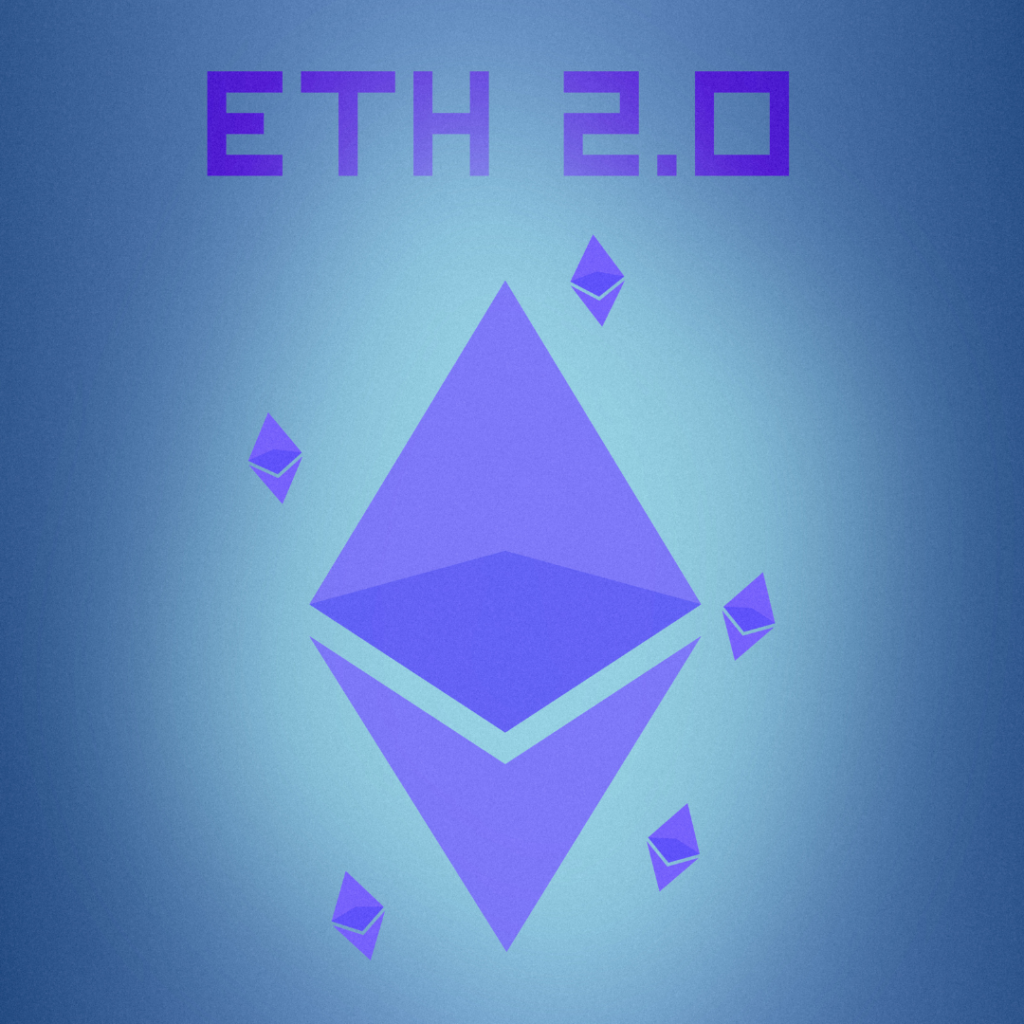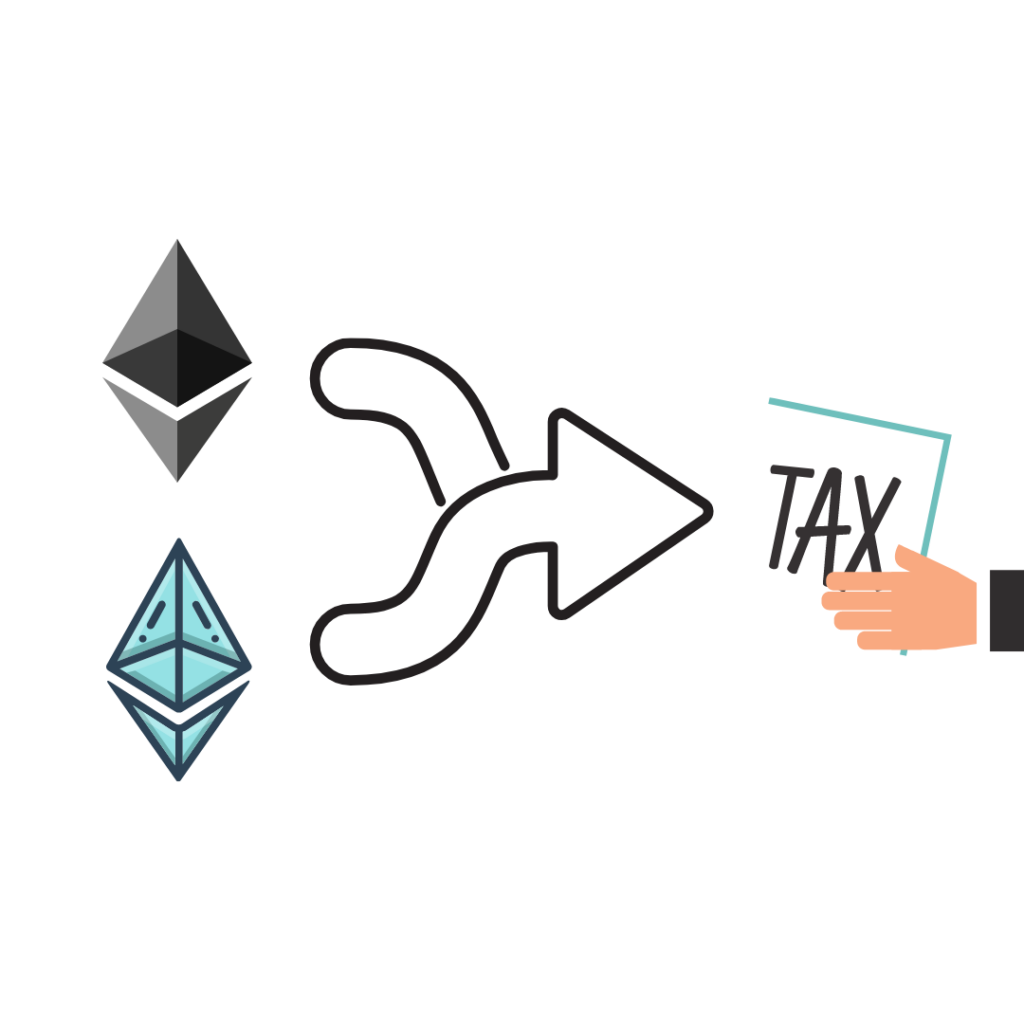Ethereum Merge Explained – Is it a Taxable Event
In a significant historical event, Ethereum finally shifted from its Proof-of-Work (PoW) consensus mechanism to the Proof-of-Stake (PoS) system on 15 September 2022, as it was always intended to since its very conception in 2013. This is what everyone is referring to as the Ethereum Merge.
By reducing Ethereum’s energy consumption by 99.95%, the merge has proven to be a huge step forward in improving scalability and sustainability for the Ethereum network.
Naturally, it also caused a lot of confusion and misconception, especially among people that are not familiar with the history and timeline of Ethereum. But worry not. We’ll answer all your questions and clear all confusion in this article.
What is the Ethereum Merge?
Some might say it’s a soft fork, while others may simply define it as the transition of Ethereum’s Proof-of-Work (PoS) consensus system to Proof-of-Stake (PoS).
But then why is everyone using the term “merge”?
Well, because the upgrade merges Beacon Chain (the “consensus” layer) with Ethereum’s mainnet (the “execution” layer) and its transaction history, smart contracts, accounts, etc.
Beacon Chain, which uses the PoS consensus mechanism for processing transactions, was introduced in 2020 by Ethereum’s core developers. All this while, Beacon Chain ran completely separate from Ethereum’s PoW mainnet and was in its testing phase. You may already know about it by “Ethereum 2.0”.

It was called Ethereum 2.0 to differentiate it from Ethereum’s mainnet. But since after the merge, there is only one Ethereum now, the term has been dropped.
Also, the merge wasn’t scheduled on a specific date or time. Instead, the developers scheduled the merge at a TTD (Total Terminal Difficulty) of 58,750,000,000,000,000,000,000, which occurred on 15 September 2022.
TTD is a unit representing the difficulty level for validating new blocks.
The primary objective of this merge (upgrade) was to –
- Reduce energy consumption
- Allow scalability
- Improve security
Proof-of-Work (PoS) vs Proof-of-Stake (PoS)

Proof-of-Work (PoW) is the former consensus mechanism of Ethereum. One that is still being used by Bitcoin.
In PoW, miners compete with each other to solve a cryptographical puzzle to validate transactions and create new blocks, and as a reward, receive newly minted coins.
Check out our guide on crypto mining to get an in-depth understanding of PoW.
Even though PoW has many limitations, like scalability and a high barrier of entry, its major criticism has always been its excessive energy consumption, which many believe to be detrimental to the environment.
That being said, PoW is definitely a more battle-tested system in the real world, supporting the biggest cryptocurrency, Bitcoin, since its inception.
Proof-of-Stake (PoS), on the other hand, chooses its miners/validators based on the number of coins one has staked with the network.
The more you stake, the higher your chances of getting selected to validate a transaction and create a new block. Much like PoW, for every successfully created block, the validator receives a part of the transaction fee and newly minted coins as rewards.
And much like PoW, it also has its own set of limitations and drawbacks. But ultimately, it’s more scalable, reduces energy consumption by 99.95%, and makes attacks on the network economically infeasible and impractical. At least in theory, as it hasn’t been around as long as the PoW system.
As you can guess, this has caused disagreements within the community, resulting in a rift. As a consequence, some people, especially miners who invested thousands of dollars in buying expensive equipment and computers, are preparing to copy the old PoW version of Ethereum and continue with that, potentially triggering a hard fork. More on this later.
Staking Ethereum to Become a Validator
Since Ethereum shifted to a PoS consensus mechanism, many people would want to stake Ethereum as an alternative to mining.
But Beacon Chain allowed staking even before the merge. In most exchanges, it was represented as “ETH2” or “ETH2.S”. After the merge, it will simply change to “ETH”.
As for who can stake Ethereum and become a validator?
Anyone. The only catch is you need a minimum of 32 ETH to start staking. Also, even though you can stake and earn rewards, you can’t withdraw your funds because of the lockup period.
According to the core developers, you can withdraw your funds in the future after the upcoming Shanghai upgrade. Until then, you can earn rewards and see them reflected in your account, but can’t use them.
Tax Consequences of Staking Ethereum

The IRS hasn’t released specific guidelines for staking and its tax consequences. So, it’s still a gray area. That is exactly what the Jannets v. United States of America case deals with.
But based on the existing frameworks, we can say that staking rewards are treated as taxable income and are subject to income tax rates and capital gains tax rates when you sell them in the future, the same as crypto mining rewards.
Check out our guide on crypto staking taxes to know more.
But in the case of Ethereum, this gets a little tricky.
Why?
For an income, property or asset to qualify as income, you must have dominion and control over it, which, as of now, the Ethereum staking rewards don’t allow since it’s locked up.
So, while some say you should take a more conservative approach and report the staking rewards when it reflects in your account, others suggest a more aggressive approach of reporting once you can withdraw them (meaning after the Shanghai update).
We’ll keep updating this article as we gain more clarity.
As for the act of staking itself, it’s safe to assume that it’s not a taxable event since there is no disposition or acquisition of new assets.
What does the Ethereum Merge Means for Users/Holders?
Nothing. Users and holders of Ethereum will continue to see and use their Ethereum as if nothing happened. The merge has no impact on users/holders of Ethereum.
Potential Hard Fork?
As mentioned before, some proponents of the PoW consensus mechanism want to continue using the old version of Ethereum. Hence, they created a copy of the PoW Ethereum version, triggering a split in the blockchain (hard fork).
Some experts suggest staying away from forked Ethereum, as most probably, it could be a scam.
Will you Receive New Coins as a Result of the Hard Fork?
If you have your Ethereum coins in a non-custodial or hardware wallet, no.
If you have them in an exchange, maybe.
It depends if the exchange you’re using adds the new forked version of Ethereum. In that case, you might find newly minted coins in your exchange wallet.
As for its tax consequences, we discussed them in-depth here. But to put it briefly, if you receive newly minted forked coins, you must report it as taxable income and pay income tax rates on them.
Addressing Common Confusions about the Ethereum Merge
The following are some common confusions and misconceptions surrounding the Ethereum merge and its consequences.
Will the Ethereum Merge increase transaction speed?
Marginally. While the transaction speed may slightly improve, this change will be too small to notice. Plus, improving transaction speed was never really the objective of this upgrade.
Will the Ethereum Merge reduce gas fees?
No, and it never intended to. However, now that Ethereum is shifted to a PoS consensus system, the developer can focus on reducing gas fees in future upgrades.
Do you need to have 32 ETH to become a validator?
While it’s true that you must stake a minimum of 32 ETH to become a validator in the network, you don’t necessarily have to have 32 ETH. Alternatives, like pooled staking and a few centralized platforms, allow you to start staking with less than 32 ETH.